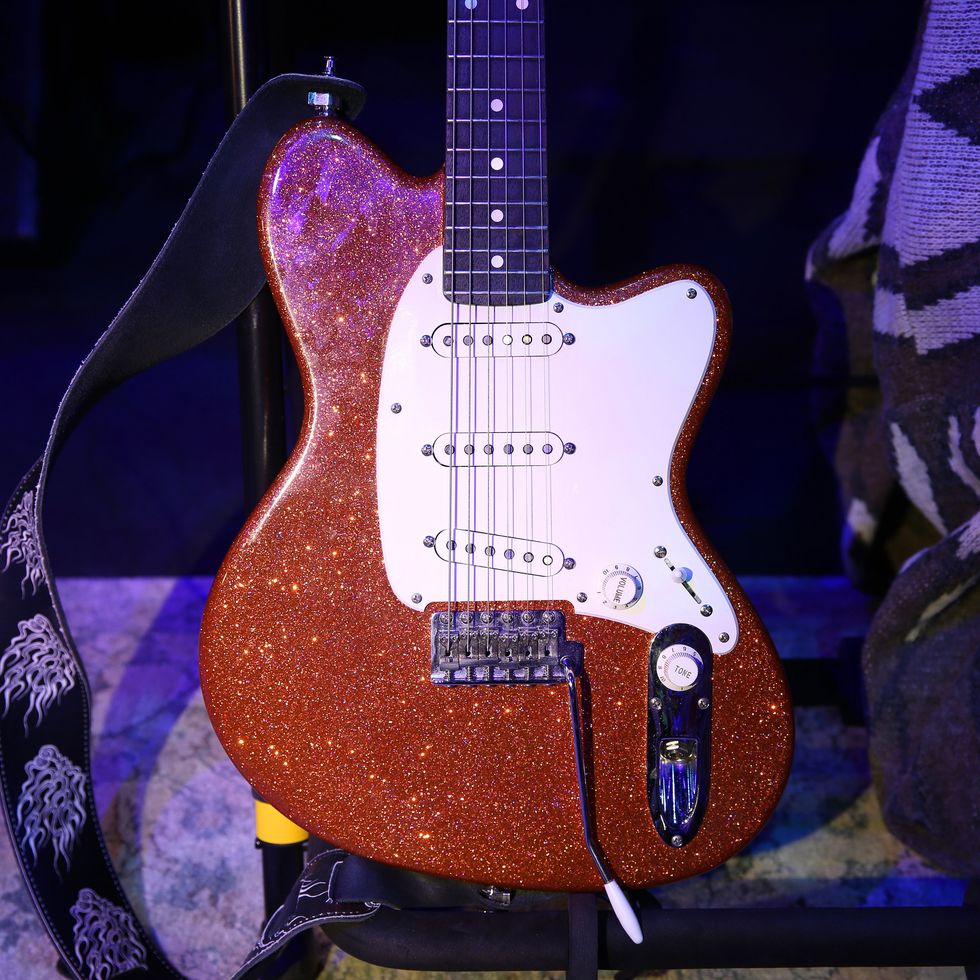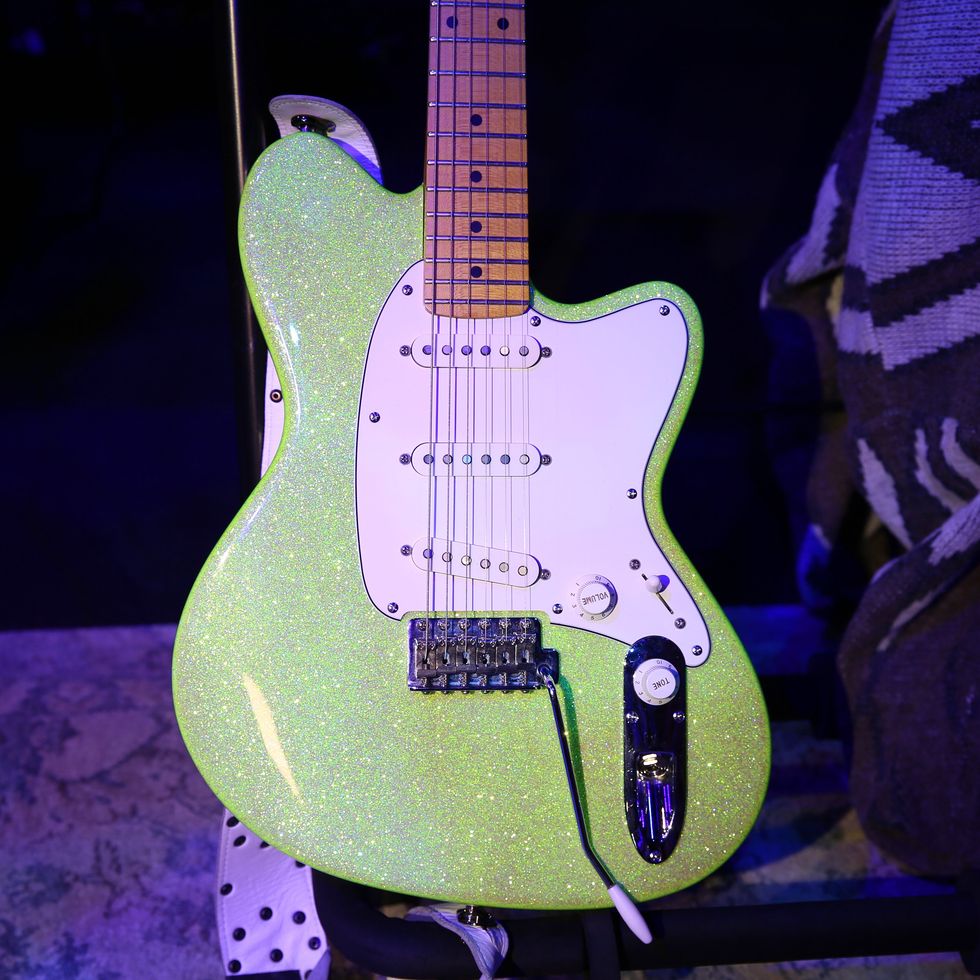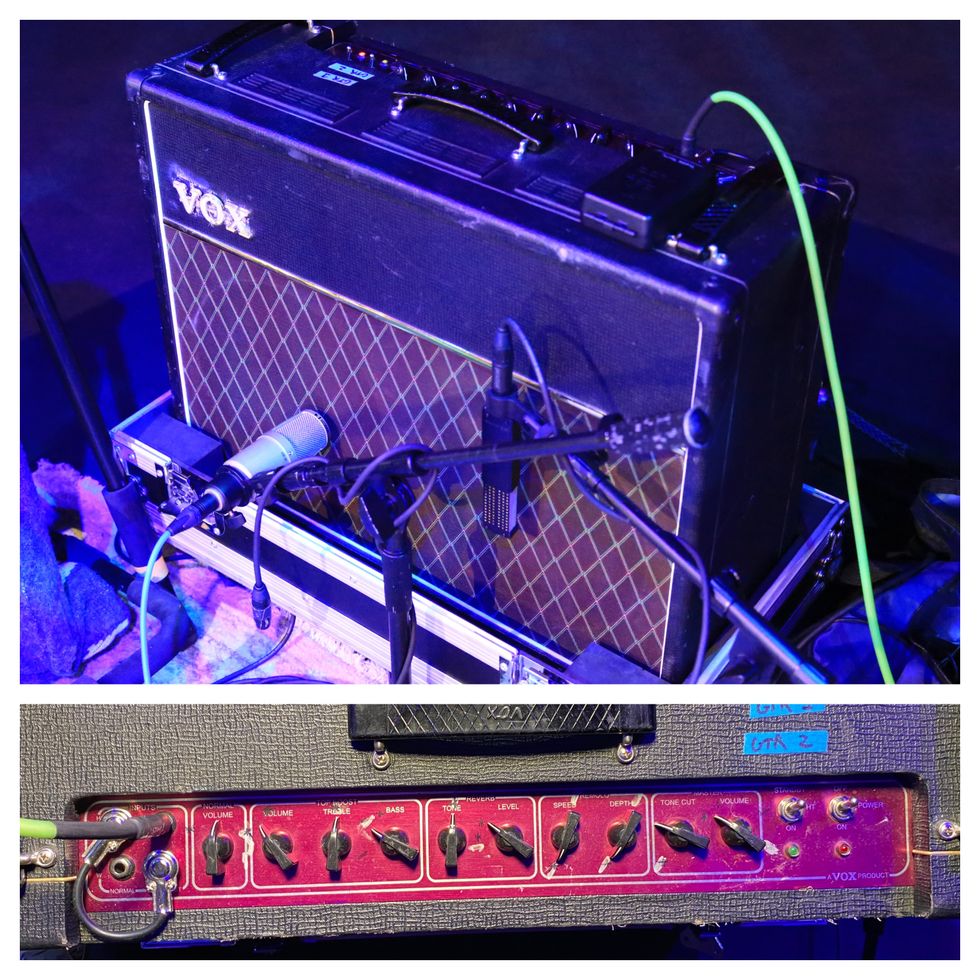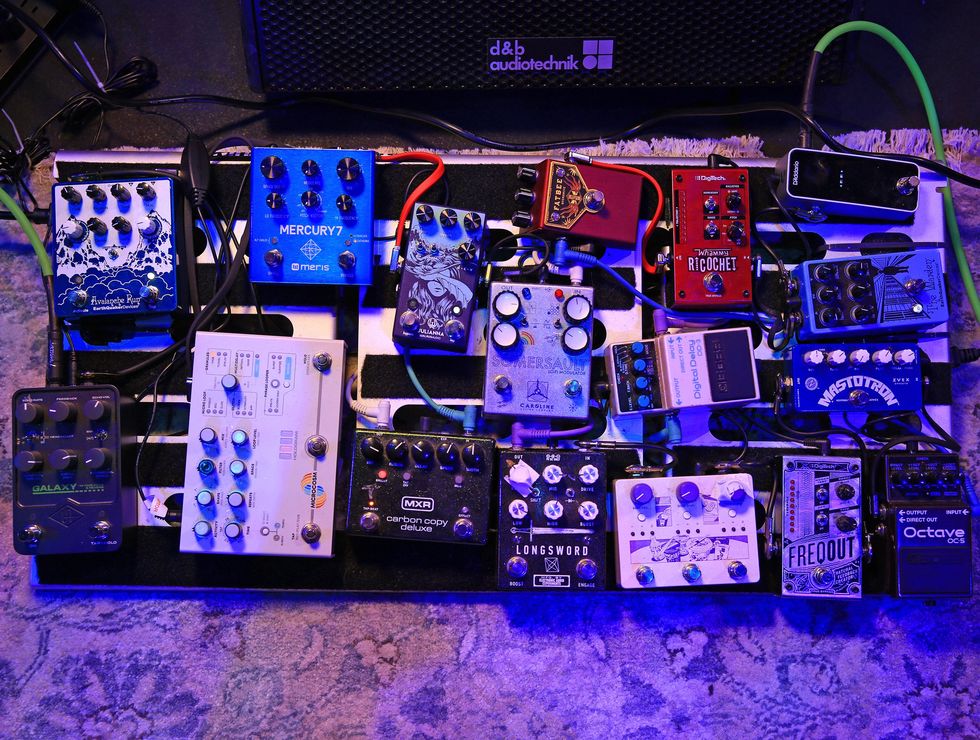The modern guitar hero dishes on her signature Ibanez YY10s, hints at their potential successors and tweaks, and reveals the ideal pedal that hasn’t landed on her board (yet).
Since we last saw Yvette Young in 2019, the guitar-playing musical illustrator has been challenged, and proven courageous.
“I went from a situation where I was afraid of one of my bandmates, and did what I needed to do to free myself from what I felt to be an emotionally, and thus creatively draining, situation,” Young revealed to PG earlier this year. She parted ways with Covet’s members during the recording sessions for the new album, Catharsis, and had the bass parts re-done by noted touring and session bassist Jon Button.
Through the writing and recording process she found personal purification. “I feel like, on Catharsis, some of the songs are a bit darker and it was definitely me having an outlet for some stuff that was painful, but a lot of it is uplifting and very happy and dance-y,” Young said. “Music is transformative. If you’re ever feeling in a bad mood, if you write music that sounds really happy, it can uplift you. Writing music that sounds like how you wish you felt can be really helpful sometimes.”
And while processing her feelings through the guitar, she became reinvigorated with the instrument and rediscovered its inherent joy.
“I really have to be my own fortress and I have to really stay in tune with what excites me,” admitted Young. “The direction I go in becomes really clear when I focus on what gives me goosebumps when I’m playing, what makes me jump up and down ’cause I’m so excited about it.”
Her charismatic, vivid guitar stories excite us, so we wanted to get the scoop on her ever-changing tools and palette. Weeks after releasing Catharsis, Yvette Young and her Covet bandmates headlined Nashville’s Brooklyn Bowl. She invited PG’s Chris Kies onstage for a conversation covering her Ibanez YY10 signature models (and their potential upcoming changes), her dream pedal, and the key switches (and the alternative tones they produce) on her stomp station since the last Rundown.
Brought to you by the D’Addario Trigger Capo.
Signature Sparkle

During this headlining run, Young is traveling only with a pair of her signature Ibanez Prestige Series YY10 models with three Strat-style single-coil pickups. She has another Ibanez sig, the YY20, that is in a two-pickup, T-style configuration, but she notes in the Rundown that she prefers how the YY10 reacts with overdriven tones through her pedals and AC30. For Catharsis, she locked into F–A–C–G–C–E and wanted this set to feature fewer tuning moments and a more seamless musical narrative. Both touring YY10s have alder bodies with roasted maple necks, but “Creamsicle” has a rosewood fretboard and standard Seymour Duncan SSL52 Five-Two Strat pickups.
A fun fact from our 2023 PG interview with Yvette: These signature guitars are tuned (low to high) F–A–C–G–B–E when they are shipped. “I wanted to just kind of challenge people to try it,” she said. “I’ve been talking to a bunch of students and they’re like, ‘I never tried open tunings because I’ve always been scared of tuning it to something different.’ I was like, ‘Well what if it just came that way?’”
Green Machine

A roasted maple neck gives “Flubber” a different vibe, and its Wilkinson single-coils have sent Young down an experimental phase; she hints at P-90s potentially showing up in a future YY model. She says that the Wilkinsons are more “pristine and clear” in comparison to the Five-Twos that break up and get gritty in a pleasing way. This sparkly 6-string is reserved for tunings she drops down to D. Both guitars take D'Addario NYXLs (.011–.056).
Chime Time

Yvette has plugged into the same high input of the top boost channel of this Vox AC30 for years. Her settings reveal that she still uses the amp’s reverb even though there are two reverb pedals on her board, though Young does dial out all the amp’s trem.
Launchpad

Young has a lot of room to soar in an instrumental trio, so she travels with a plush pedal playground. Staples still being stomped on from the 2019 Rundown include a couple EarthQuaker Devices—The Warden and Avalanche Run—a MXR Carbon Copy Deluxe, an Electronic Audio Experiments Longsword, a Caroline Guitar Company Somersault, and a Meris Mercury7. For this tour, she’s welcomed some new noisemakers aboard, including a Universal Audio Galaxy ’74 Tape Echo & Reverb, a Hologram Electronics Microcosm, a Walrus Audio Julianna, a Beetronics Fatbee, a pair of Boss boxes—a DD-3 Digital Delay and OC-5 Octave—a double dose of DigiTech—Whammy Ricochet and FreqOut—a ZVEX Mastotron, and a Ground Control Audio Noodles. A D’Addario Chromatic Pedal Tuner keeps her YY10s in check.
![Rig Rundown: Yvette Young [2023]](https://www.premierguitar.com/media-library/rig-rundown-yvette-young-2023.jpg?id=34150999&width=1200&height=675)





![Rig Rundown: AFI [2025]](https://www.premierguitar.com/media-library/youtube.jpg?id=62064741&width=1245&height=700&quality=70&coordinates=0%2C0%2C0%2C0)








 Zach loves his Sovtek Mig 60 head, which he plays through a cab he built himself at a pipe-organ shop in Denver. Every glue joint is lined with thin leather for maximum air tightness, and it’s stocked with Celestion G12M Greenback speakers.
Zach loves his Sovtek Mig 60 head, which he plays through a cab he built himself at a pipe-organ shop in Denver. Every glue joint is lined with thin leather for maximum air tightness, and it’s stocked with Celestion G12M Greenback speakers.























![Devon Eisenbarger [Katy Perry] Rig Rundown](https://www.premierguitar.com/media-library/youtube.jpg?id=61774583&width=1245&height=700&quality=70&coordinates=0%2C0%2C0%2C0)













